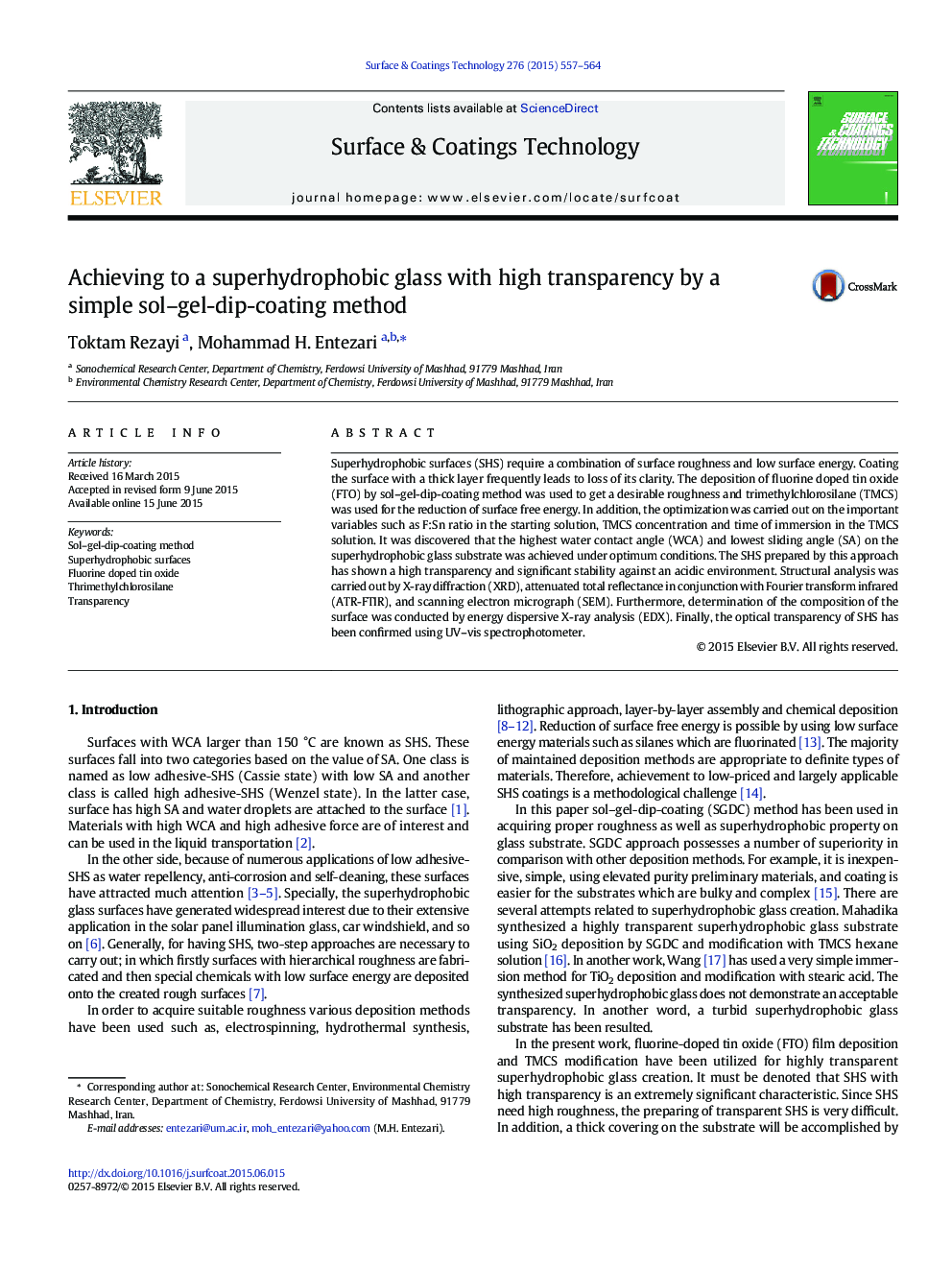| Article ID | Journal | Published Year | Pages | File Type |
|---|---|---|---|---|
| 1657016 | Surface and Coatings Technology | 2015 | 8 Pages |
•Superhydrophobic glass was fabricated using a sol–gel dip coating method.•Fluorine doped tin oxide deposition was selected for acquiring appropriate roughness on the glass substrate.•Thrimethylchlorosilane was used as a surface energy reducing agent.•The synthesized superhydrophobic glass demonstrated a high transparency.
Superhydrophobic surfaces (SHS) require a combination of surface roughness and low surface energy. Coating the surface with a thick layer frequently leads to loss of its clarity. The deposition of fluorine doped tin oxide (FTO) by sol–gel-dip-coating method was used to get a desirable roughness and trimethylchlorosilane (TMCS) was used for the reduction of surface free energy. In addition, the optimization was carried out on the important variables such as F:Sn ratio in the starting solution, TMCS concentration and time of immersion in the TMCS solution. It was discovered that the highest water contact angle (WCA) and lowest sliding angle (SA) on the superhydrophobic glass substrate was achieved under optimum conditions. The SHS prepared by this approach has shown a high transparency and significant stability against an acidic environment. Structural analysis was carried out by X-ray diffraction (XRD), attenuated total reflectance in conjunction with Fourier transform infrared (ATR-FTIR), and scanning electron micrograph (SEM). Furthermore, determination of the composition of the surface was conducted by energy dispersive X-ray analysis (EDX). Finally, the optical transparency of SHS has been confirmed using UV–vis spectrophotometer.
Graphical abstractFigure optionsDownload full-size imageDownload high-quality image (180 K)Download as PowerPoint slide
